Facilities managers and owners face additional hurdles when fire sprinkler manufacturers stop making products
It’s simple enough to find replacement parts for most modern fire safety products online, which means it’s easier than ever to stock a supply of spare fire sprinklers or replace a missing cover plate. The number of well-identified modern products makes it especially frustrating, however, when a search for a model number or brand name leads to a dead end — as can happen when replacing parts in older fire sprinkler systems.
Over time, manufacturers collapse, merge, or discontinue products, making repairs to fire sprinkler systems more difficult. But our manufacturer identification and product replacement guide will help make replacing an obsolete fire sprinkler a little easier.
Identifying these sprinklers may be difficult
Newer fire sprinklers are easy to identify. Each sprinkler model manufactured after December 31st, 2000 has a unique five-to-six digit sprinkler identification number, or SIN, printed on the sprinkler’s deflector plate. These sprinklers can often be identified using a SIN directory or your preferred search engine.
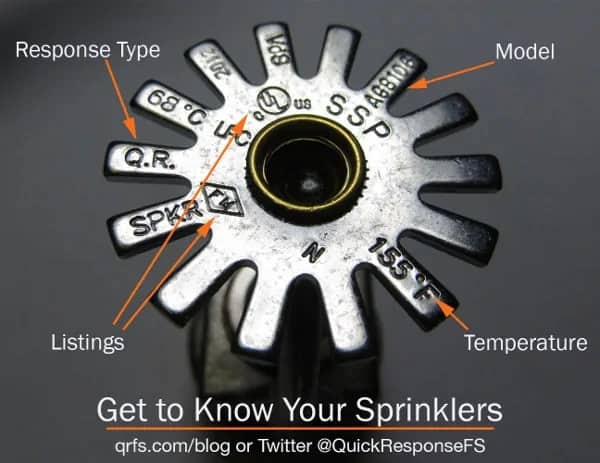
Earlier fire sprinklers, as featured later in this article, have a non-standard combination of logos and lettering stamped on frames or deflector plates, making them more difficult to identify. When a manufacturer merges or goes out of business, a consumer’s go-to source for parts and information disappears. Some sprinklers have even been “re-designated,” meaning they’re sold under a different name.
Tyco, a leading North American manufacturer of fire safety products, has acquired at least four sprinkler companies: Central Sprinkler Company, Gem Sprinkler Company, Grinnell Corporation, and Star Sprinkler Inc.
Our profiles of these companies, including a list of discontinued and surviving products, are below — followed by some practical advice on what to do with an older sprinkler head in need of replacement or new parts.
Central Sprinkler Company (Central/CSC)
Key facts: Acquired by Tyco in 1999, CSC and its product line have all but disappeared from the market. But as of 2003, Tyco stated that some Central products were still available “until depletion.”
Identification: The word “CENTRAL” is stamped on the metal fire sprinkler frame and the letters “CSC” are imprinted on the deflector. Some deflectors may be stamped with a Sprinkler Identification Number beginning with a single letter “C” (not “CD,” “CP,” or “CS”).
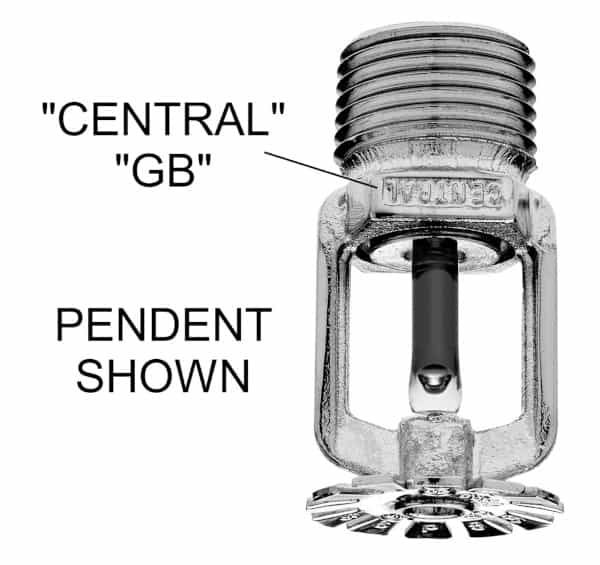
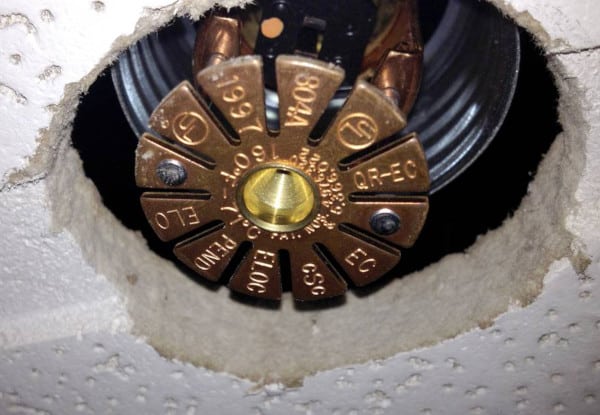
Which Central fire sprinklers are still on the market? Select Model A products and Model H products may still be available. QRFS stocks replacement cover plates for Central Sprinkler Company’s Model A Royal Flush Concealed — but their scarcity has driven a higher cost.
Which Central fire sprinklers are discontinued? Select Model A and Model H fire sprinklers; GBR-2 and ROC.
What happened? Central Sprinkler Company’s nearly 30 years as a sprinkler systems manufacturer came to an end in the late 1990s after six fires and more than $3 million in property damage prompted the recall of over eight million CSC sprinkler heads. Following legal action by the State of California and the Consumer Product Safety Commission and other legal and financial difficulties, the Pennsylvania-based company sold to Tyco for more than $100 million.
Gem Sprinkler Company & Grinnell Corporation
Key facts: Gem and Grinnell joined Tyco in the 1970s — long before many of Tyco’s other acquisitions — but these brands didn’t see much of their product lines erased until the 2000s.
Identification: These fire sprinklers feature deflector plates stamped with the letter “G” in a triangle. If made after 2001, they may also have a five-or-six-digit sprinkler identification number prefixed with the letter F or G — the codes used by the Grinnell company.
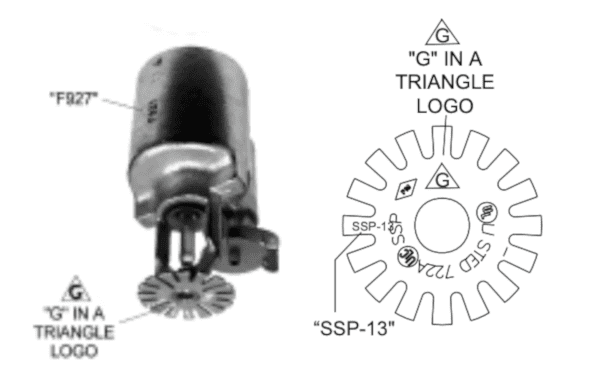
Which Gem and Grinnell fire sprinklers are discontinued? According to Tyco’s previously published technical data sheets, models F680, F685, F690, F692, F950, F978, F983, F984, F990, F992, F993, F995, F996, FR-1, and Issue D were discontinued or replaced more than 15 years ago.
Which Gem and Grinnell fire sprinklers may still be available? FR-1 (re-designated as Series TY-FRL) and some Model A Sprinklers (re-designated as series TY-B and TY-FRB sprinklers).
What happened? Gem had more than 150 years in the fire protection business, including many as an affiliate of larger companies like Grinnell or Tyco. Following a 2001 recall of more than 30 million sprinklers — including more than 150,000 sold by Gem Sprinkler Company and Star Sprinkler, Inc. — Tyco gradually removed or replaced most of Gem’s product line.
Star Sprinkler Incorporated
Key facts: Tyco acquired Star Sprinkler in 1996, prior to a massive recall involving Tyco, Gem, and Central.
Identification: Star Sprinkler’s sprinkler identification numbers begin with a single letter “S.” Some models, including those manufactured prior to 2001, may feature deflector plates imprinted with a star-shaped logo or the word “STAR.”
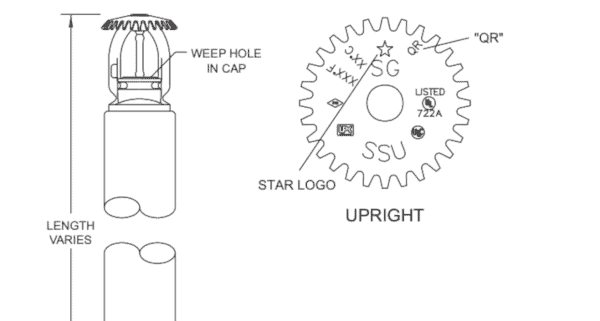
Which Star fire sprinklers are unavailable? Celeste, Model E, and Stealth fire sprinklers have long been discontinued. Others have been replaced: Star’s PH-2, PH-5, and StarMax lines (replaced with the Series TFP); S210, S215, S220, S240, and SG-R (with the LFII model sprinklers).
Which Star fire sprinklers may still be on the market? The SG-QR was re-designated as the Model TY-FRB sprinkler and the LD-2 was re-designated as a Series TY-L sprinkler.
What happened? Tyco purchased Star, a fire sprinkler manufacturer with nearly a century in the fire industry, along with a large number of other companies in the 1990s. Like Tyco’s other purchases, Star’s presence as a brand name has greatly declined since its acquisition.
Replacement parts are sometimes available
Fire sprinklers and their components, like cover plates and escutcheons, undergo rigorous safety testing to guarantee that they’ll operate as expected. These components can only be replaced with a manufacturer-approved, listed match.
And that match needs to be cared for: a head that’s been caulked, painted, glued, or covered with dirt won’t pass inspection.
Never conduct an ad hoc repair of a broken sprinkler head or its components. Either replace the exact component with a listed substitute or install a new sprinkler head, both of which must be done by a qualified fire protection professional. About the most a building owner or facility staff can correct is a light-to-medium coat of dust on a “loaded” sprinkler head. Read our latest guide on cleaning fire sprinklers.
If you need to replace a component on a discontinued model, exact matches can sometimes be found. More than 15 years after Tyco acquired Central Sprinkler Company, our customers have successfully purchased replacement cover plates for CSC’s Model A Royal Flush Concealed fire sprinkler. The plates, while expensive, are an exact match — and an affordable alternative to having a professional drain a sprinkler system to install new heads.
No luck in finding exact components? Replace the head — it’s probably required
When an exact match of a sprinkler component can’t be found, it’s time to install a new sprinkler head, according to the National Fire Protection Association’s (NFPA) standard for sprinkler systems inspections.
From the 2023 edition of NFPA 25
5.2.1.1.5.1 Where the listed escutcheon or coverplate from a listed assembly is missing and is no longer commercially available, the sprinkler shall be replaced.
If you discover that your heads are very, very old — say, nearly 100 years old — you may (but not necessarily) have to upgrade them. NFPA defines any head manufactured before 1953 as an “old-style sprinkler” and says the following:
A.5.4.1.3.1 Old-style sprinklers are permitted to replace existing old-style sprinklers. Old-style sprinklers should not be used to replace standard sprinklers without a complete engineering review of the system. The old-style sprinkler is the type manufactured before 1953. It discharges approximately 40 percent of the water upward to the ceiling, and it can be installed in either the upright or pendent position.
The problem, of course, is finding a direct replacement. And it may be better to upgrade anyway. The key to replacing any obsolete sprinkler is matching its performance characteristics with the new one.
From the 2023 edition of NFPA 25
5.4.1.3* Replacement sprinklers shall have the proper characteristics for the application intended, which include the following:
(1) Style
(2) Orifice size and K-factor
(3) Temperature rating
(4) Coating, if any
(5) Deflector type (e.g., upright, pendent, sidewall)
(6) Design requirements
The NFPA 25 Handbook offers additional guidance:
While replacement sprinklers must have the same characteristics, nothing in NFPA 25 or NFPA 13 requires that the replacement sprinkler be the same make and model. Sprinkler manufacturers may update or discontinue a particular model, but sprinklers with the same operating characteristics are almost always available.
Note that “special sprinklers,” such as early suppression fast-response (ESFR) models, require a much more specific match. In this case, or if you are unsure about a replacement or can’t find a sprinkler with the right characteristics, consult a life safety professional:
From the 2023 edition of NFPA 25
A.5.4.1.5 It is imperative that any replacement sprinkler have the same characteristics as the sprinkler being replaced. If the same temperature range, response characteristics, spacing requirements, flow rates, and K-factors cannot be obtained, a sprinkler with similar characteristics should be used, and the system should be evaluated to verify the sprinkler is appropriate for the intended use. With regard to response characteristics, matching identical response time index (RTI) and conductivity factors are not necessary unless special design considerations are given for those specific values.
Using the wrong replacement parts can void a sprinkler head’s warranty and put lives at risk. Installing a replacement sprinkler with the wrong performance characteristics carries a similar risk.
If you need to buy replacement parts or new heads, take a look at QRFS’s escutcheons, cover plates, or commercial fire sprinkler heads, or just use the search function at the top of the page.
If you have an old model and can’t find a replacement, get in touch with us. We’ve just about seen it all when it comes to replacing antiquated sprinklers and their parts, and we can likely save you immense time searching for replacement covers, sprinkler heads, escutcheons, and even older valves.
QRFS is compiling a definitive list of obsolete sprinkler heads and components — and you can help!
If you’ve run into obsolete sprinklers and been able to find replacements (or if you’ve had no luck), submit your experience in the comments section or via our contact form. We’d love to hear about your experience.
You can also give us a call at 888.361.6662.


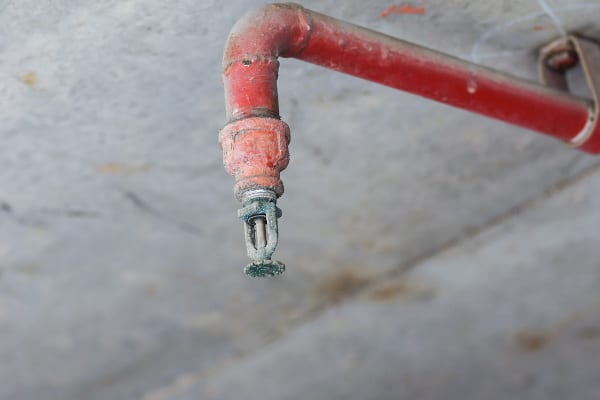
PLEASE PROVIDE YOUR DISTRUBITORS IN WEST VIRGINIA.
NEED THE GLOBE SPRINKLER FOR COAL MINES
TYCO 365
THANK YOU
Brenda, thank you for reaching out. We sell our products online (no distributors needed!). View the QRFS line of Tyco commercial sprinkler heads. If you need assistance finding a product, you can contact our support team at support@qrfs.com or 888-361-6662.
I work with Johnson controls and JCI Bought TYCO a few years ago. Thanks for this great article.
Need to find the wrench for removing and replacing Gem F978 1/2 inch recessed sprinkler heads.
Don — Thank you for reaching out. We will have someone from our QRFS Customer Support Team contact you, and you can also email them any requests to get faster service!
On most of my old heads the letters and numbers are unreadable. I have used eraser’s, finger nail, and cleaners to semi clean them off and read the stamped letters. Question: Can I use sand paper or scotch guard to clean the defector?
Dean — No … unless the sprinkler is 100% taken out of service. NFPA 25 guidelines don’t even allow an individual to dust a fire sprinkler unless it can be done without touching it. If, however, it’s an uninstalled old sprinkler you are no longer using, feel free to do whatever you’d like to the deflector! 🙂 And if you need to replace but can’t find the numbers, simply email QRFS support and send us a picture!
I am in need of several 135 °F Ceiling plate assemply star part number series 2101. the finish is white and I am unable to find them anywhere. Is there perhaps a new manufacturer that is making the same? They fit Model “Q” 1/2″ X 1/2″ PENDENT CONCEILED SPRINKLER 2100-01 and 2100-02. Please let me know.
Mike – Thank you for reaching out. We will have someone from our QRFS Customer Support Team contact you, and you can also email them any requests to get faster service!
Are replacement plates available for the star eclipse cover plate with spring ?
Chris — those discontinued models are hard to find replacements for and are usually expensive. You likely have to replace the head … but if you can email us the exact model number (and perhaps a picture of the sprinkler), our customer service team can check.
Has anyone been able to find a recessed pendent Firematic Model S sprinkler cut sheet. I’m trying to understand its characteristics before providing a replacement sprinkler head. Thanks for any help possible.
Sonny — We don’t see any data sheets available online anymore. One suggestion is to attempt contacting UL, which reported on some safety issues with these sprinklers; they may have kept a record of the performance characteristics, etc.